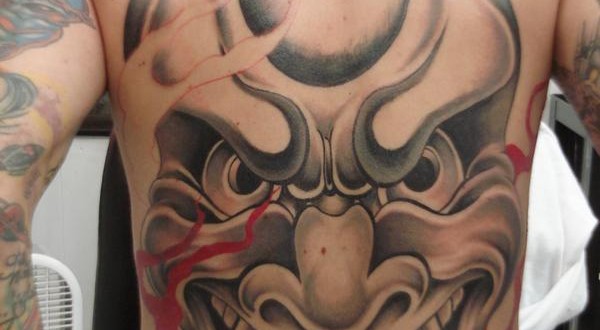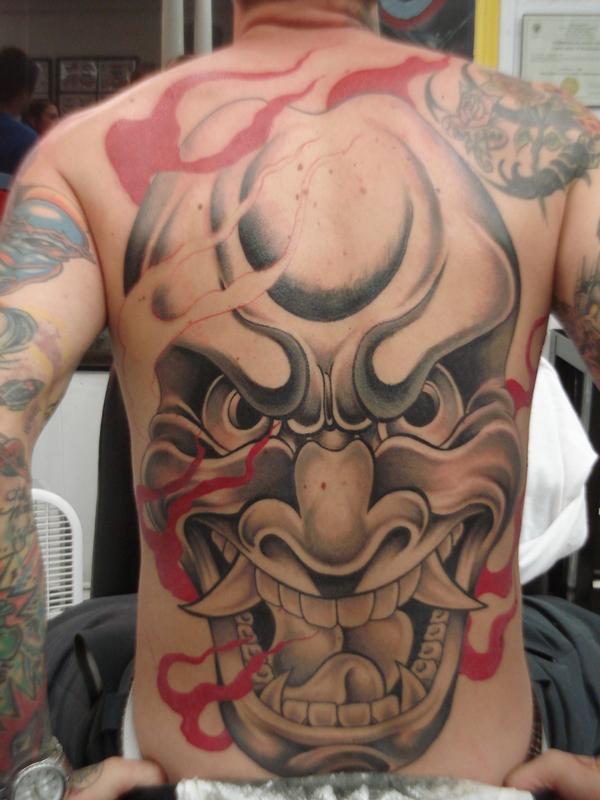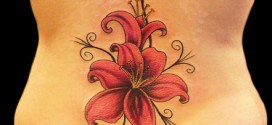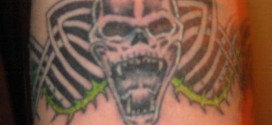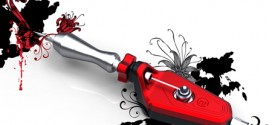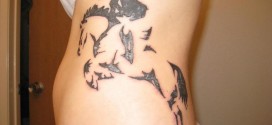Oni Tattoos – In Japanese folk lore, the Oni is the demon associated with all kinds of evil and distressful emotions. These demons are said to lurk around the dying, rushing in to pull souls down to hell. In demon hierarchy, they are worse than the Tengu (the crow-like or long-nosed goblin mischief-maker), wreaking serious damage to humans and devastation to the land.
Tattoos of Oni masks are popular with admirers of Japanese traditions and designs. With its ferocious expression, bulging eyes, snarling mouth, and horns sprouting from either side of its forehead, the Oni strongly resembles the devil as portrayed in western religious and folk art. As tattoos, they are often sported on the backs of hands and snarling up the sides of torsos.
Belief in devils, evil spirits and ghosts has a long history in Japan, and is rooted in religious beliefs going back thousands of years. Devil images and masks were used to terrify humans and also to frighten away other evil spirits. Plagues, famine and earthquakes were attributed to the Oni. Before Buddhism came to Japan, ceremonies to keep away the Oni were performed around shrines and temples.
The Oni character appeared in mime and dance, and also in prayers for peace, fertility and longevity, customs that became an intricate part of the Japanese culture. In Buddhist rituals, monks and priests held retreats in order to dispel Oni from the land. In the traditional Japanese Noh theatre performances, the essence of the Oni character is displayed in each mask. The demon character usually appears at the end of the play, along with other non-human entities.
Noh theatre as seen today is said to have been crafted by two great actors of the 14th and 15th century. Though it declined after the fall of the last shogun around 1867, the tradition was revived after WWII. The devilish mask of the Oni can still be seen in Japanese performances, looking as evil now as they did more than 500 years ago.
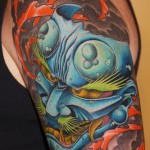 |
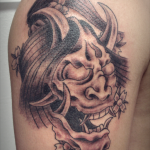 |
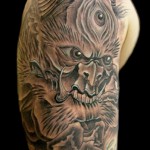 |
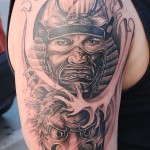 |
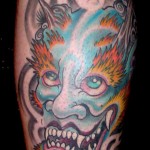 |
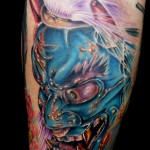 |
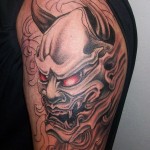 |
 |
 Tattoo Fonts For Women and Women Tattoo Fonts Gallery For Men and Women
Tattoo Fonts For Women and Women Tattoo Fonts Gallery For Men and Women
